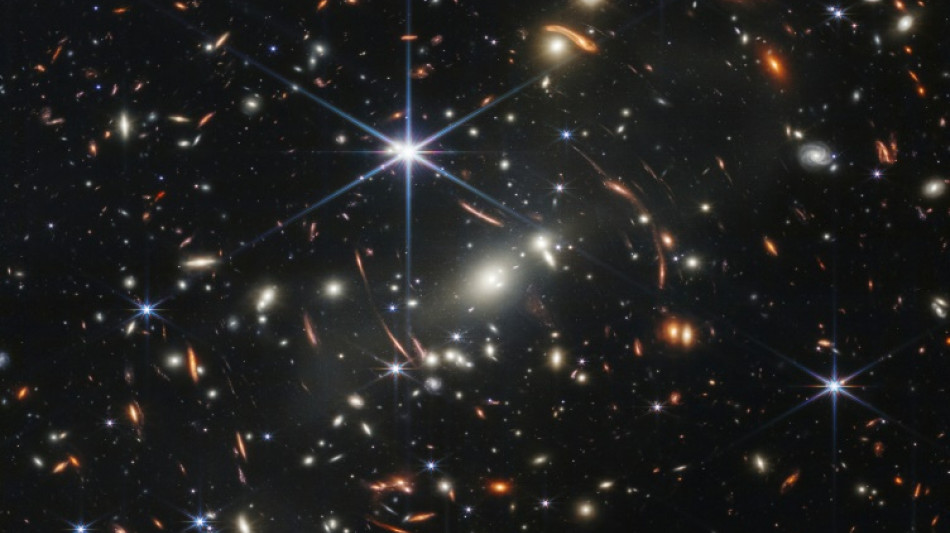
-
 Banana skin 'double whammy' derails McIlroy at Australian Open
Banana skin 'double whammy' derails McIlroy at Australian Open
-
Epic Greaves double ton earns West Indies draw in first NZ Test

-
 Thunder roll to 14th straight NBA win, Celtics beat depleted Lakers
Thunder roll to 14th straight NBA win, Celtics beat depleted Lakers
-
Myanmar citizens head to early polls in Bangkok

-
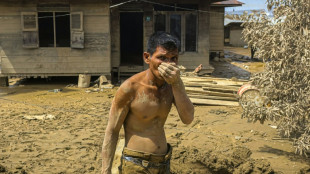 Starvation fears as more heavy rain threaten flood-ruined Indonesia
Starvation fears as more heavy rain threaten flood-ruined Indonesia
-
Sri Lanka unveils cyclone aid plan as rains persist
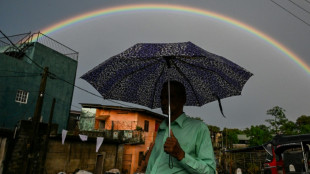
-
 Avatar 3 aims to become end-of-year blockbuster
Avatar 3 aims to become end-of-year blockbuster
-
Contenders plot path to 2026 World Cup glory after Trump steals show at draw

-
 Greaves leads dramatic West Indies run chase in NZ Test nail-biter
Greaves leads dramatic West Indies run chase in NZ Test nail-biter
-
World record-holders Walsh, Smith grab wins at US Open

-
 Ukraine, US to meet for third day, agree 'real progress' depends on Russia
Ukraine, US to meet for third day, agree 'real progress' depends on Russia
-
Double wicket strike as New Zealand eye victory over West Indies

-
 Peace medal and YMCA: Trump steals the show at World Cup draw
Peace medal and YMCA: Trump steals the show at World Cup draw
-
NBA legend Jordan in court as NASCAR anti-trust case begins

-
 How coaches reacted to 2026 World Cup draw
How coaches reacted to 2026 World Cup draw
-
Glasgow down Sale as Stomers win at Bayonne in Champions Cup

-
 Trump takes aim at Europe in new security strategy
Trump takes aim at Europe in new security strategy
-
Witness in South Africa justice-system crimes probe shot dead

-
 Tuchel urges England not to get carried away plotting route to World Cup glory
Tuchel urges England not to get carried away plotting route to World Cup glory
-
Russian ambassador slams EU frozen assets plan for Ukraine

-
 2026 World Cup draw is kind to favorites as Trump takes limelight
2026 World Cup draw is kind to favorites as Trump takes limelight
-
WHO chief upbeat on missing piece of pandemic treaty

-
 US vaccine panel upends hepatitis B advice in latest Trump-era shift
US vaccine panel upends hepatitis B advice in latest Trump-era shift
-
Ancelotti says Brazil have 'difficult' World Cup group with Morocco

-
 Kriecmayr wins weather-disrupted Beaver Creek super-G
Kriecmayr wins weather-disrupted Beaver Creek super-G
-
Ghostwriters, polo shirts, and the fall of a landmark pesticide study

-
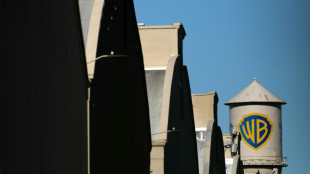 Mixed day for global stocks as market digest huge Netflix deal
Mixed day for global stocks as market digest huge Netflix deal
-
Fighting erupts in DR Congo a day after peace deal signed

-
 England boss Tuchel wary of 'surprise' in World Cup draw
England boss Tuchel wary of 'surprise' in World Cup draw
-
10 university students die in Peru restaurant fire
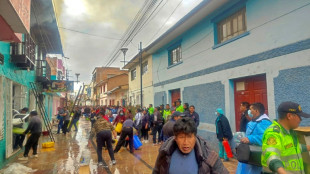
-
 'Sinners' tops Critics Choice nominations
'Sinners' tops Critics Choice nominations
-
Netflix's Warner Bros. acquisition sparks backlash
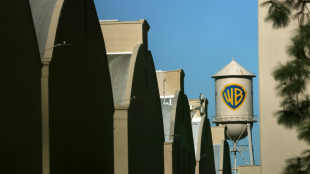
-
 France probes mystery drone flight over nuclear sub base
France probes mystery drone flight over nuclear sub base
-
Frank Gehry: five key works

-
 US Supreme Court to weigh Trump bid to end birthright citizenship
US Supreme Court to weigh Trump bid to end birthright citizenship
-
Frank Gehry, master architect with a flair for drama, dead at 96

-
 'It doesn't make sense': Trump wants to rename American football
'It doesn't make sense': Trump wants to rename American football
-
A day after peace accord signed, shelling forces DRC locals to flee

-
 Draw for 2026 World Cup kind to favorites as Trump takes center stage
Draw for 2026 World Cup kind to favorites as Trump takes center stage
-
Netflix to buy Warner Bros. in deal of the decade

-
 US sanctions equate us with drug traffickers: ICC dep. prosecutor
US sanctions equate us with drug traffickers: ICC dep. prosecutor
-
Migration and crime fears loom over Chile's presidential runoff

-
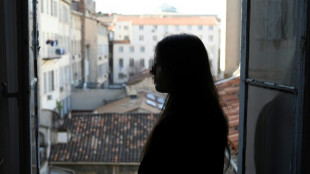 French officer charged after police fracture woman's skull
French officer charged after police fracture woman's skull
-
Fresh data show US consumers still strained by inflation

-
 Eurovision reels from boycotts over Israel
Eurovision reels from boycotts over Israel
-
Trump takes centre stage as 2026 World Cup draw takes place

-
 Trump all smiles as he wins FIFA's new peace prize
Trump all smiles as he wins FIFA's new peace prize
-
US panel votes to end recommending all newborns receive hepatitis B vaccine

-
 Title favourite Norris reflects on 'positive' Abu Dhabi practice
Title favourite Norris reflects on 'positive' Abu Dhabi practice
-
Stocks consolidate as US inflation worries undermine Fed rate hopes

| RBGPF | 0% | 78.35 | $ | |
| BCC | -1.66% | 73.05 | $ | |
| SCS | -0.56% | 16.14 | $ | |
| CMSD | -0.3% | 23.25 | $ | |
| VOD | -1.31% | 12.47 | $ | |
| NGG | -0.66% | 75.41 | $ | |
| RYCEF | -0.34% | 14.62 | $ | |
| RELX | -0.55% | 40.32 | $ | |
| BCE | 1.4% | 23.55 | $ | |
| JRI | 0.29% | 13.79 | $ | |
| RIO | -0.92% | 73.06 | $ | |
| CMSC | -0.21% | 23.43 | $ | |
| GSK | -0.33% | 48.41 | $ | |
| BTI | -1.81% | 57.01 | $ | |
| BP | -3.91% | 35.83 | $ | |
| AZN | 0.17% | 90.18 | $ |

Webb Telescope: What will scientists learn?
The James Webb Space Telescope's first images aren't just breathtaking -- they contain a wealth of scientific insights and clues that researchers are eager to pursue.
Here are some of the things scientists now hope to learn.
- Into the deep -
Webb's first image, released Monday, delivered the deepest and sharpest infrared image of the distant universe so far, "Webb's First Deep Field."
The white circles and ellipses are from the galaxy cluster in the foreground called SMACS 0723, as it appeared more than 4.6 billion years ago -- roughly when our Sun formed too.
The reddish arcs are from light from ancient galaxies that has traveled more than 13 billion years, bending around the foreground cluster, which acts as a gravitational lens.
NASA astrophysicist Amber Straughn said she was struck by "the astounding detail that you can see in some of these galaxies."
"They just pop out! There is so much more detail, it's like seeing in high-def."
Plus, added NASA astrophysicist Jane Rigby, the image can teach us more about mysterious dark matter, which is thought to comprise 85 percent of matter in the universe -- and is the main cause of the cosmic magnifying effect.
The composite image, which required a 12.5 hour exposure time, is considered a practice run. Given longer exposure time, Webb should break all-time distance records by gazing back to the first few hundred million years after the Big Bang, 13.8 billion years ago.
- The hunt for habitable planets -
Webb captured the signature of water, along with previously undetected evidence of clouds and haze, in the atmosphere surrounding a hot, puffy gas giant planet called WASP-96 b that orbits a distant star like our Sun.
The telescope achieved this by analyzing starlight filtered through the planet's atmosphere as it moves across the star, to the unfiltered starlight detected when the planet is beside the star -- a technique called spectroscopy that no other instrument can do at the same detail.
WASP-96 b is one of more than 5,000 confirmed exoplanets in the Milky Way. But what really excites astronomers is the prospect of pointing Webb at smaller, rocky worlds, like our own Earth, to search for atmospheres and bodies of liquid water that could support life.
- Death of a star -
Webb's cameras captured a stellar graveyard, in the Southern Ring Nebula, revealing the dim, dying star at its center in clear detail for the first time, and showing that it is cloaked in dust.
Astronomers will use Webb to delve deeper into specifics about "planetary nebulae" like these, which spew out clouds of gas and dust.
These nebulae will eventually also lead to rebirth.
The gas and cloud ejection stops after some tens of thousands of years, and once the material is scattered in space, new stars can form.
- A cosmic dance -
Stephan's Quintet, a grouping of five galaxies, is located in the constellation Pegasus.
Webb was able to pierce through the clouds of dust and gas at the center of the galaxy to glean new insights, such as the velocity and composition of outflows of gas near its supermassive black hole.
Four of the galaxies are close together and locked in a "cosmic dance" of repeated close encounters.
By studying it, "you learn how the galaxies collide and merge," said cosmologist John Mather, adding our own Milky Way was probably assembled out of 1,000 smaller galaxies.
Understanding the black hole better will also give us greater insights into Sagittarius A*, the black hole at the center of the Milky Way, which is shrouded in dust.
- Stellar nursey -
Perhaps the most beautiful image is that of the "Cosmic Cliffs" from the Carina Nebula, a stellar nursery.
Here, for the first time, Webb has revealed previously invisible regions of star formation, which will tell us more about why stars form with certain mass, and what determines the number that form in a certain region.
They may look like mountains, but the tallest of the craggy peaks are seven light years high, and the yellow structures are made from huge hydrocarbon molecules, said Webb project scientist Klaus Pontoppidan.
In addition to being the stuff of stars, nebular material could also be where we come from.
"This may be the way that the universe is transporting carbon, the carbon that we're made of, to planets that may be habitable for life," he said.
- The great unknown -
Perhaps most exciting of all is journeying into the unknown, said Straughn.
Hubble played a key role in discovering that dark energy is causing the universe to expand at an ever-growing rate, "so it's hard to imagine what we might learn with this 100 times more powerful instrument."
P.Anderson--BTB




